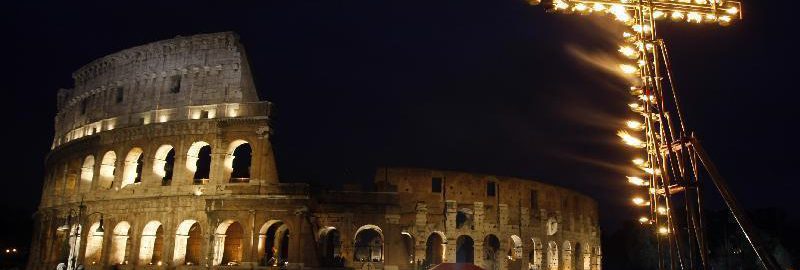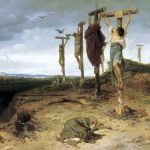Colosseum, a monumental amphitheater in the center of ancient Rome, is not only a symbol of the power of the empire, but also a place shrouded in the legend of Christian suffering. The common idea of crucifixions taking place there arouses many emotions – but did it actually take place?
Romans did persecute Christians, especially during the reigns of Emperor Nero (54-68 CE) and Domitian (81-96 CE); however, it was not the Colosseum but other places in Rome that witnessed these forms of execution. The Roman practice of crucifixion was to perform it publicly, most often outside city walls, in highly visible places (e.g. by roads), to act as a deterrent, e.g. in the case of the crucifixion of a mass of captured slaves after the suppression of the Spartacus uprising (73-71 BCE). In Rome, crucifixions also took place on the Vatican Heights, which in ancient times was outside the city limits.
Colosseum was commissioned around 80 CE, after the greatest waves of persecution of Christians during the rule of Nero. Brutal games took place inside the arena, such as gladiator fights, wild animal hunts, and public executions. It is possible that Christians died in the Colosseum arena, but there could have been many forms of execution: from being devoured by wild beasts, to crucifixion. Certainly, however, if Christian crucifixions did occur, they were not mass, as the sources would certainly have mentioned it.
So where did the belief that Christians were crucified in the Colosseum come from? It is possible that this is the result of medieval accounts and legends. Despite the lack of historical evidence that crucifixions of Christians took place in the Colosseum, over time the Colosseum became a symbol of Christian martyrdom and suffering, which was “commemorated” with a cross in the building.
To this day, the Colosseum remains one of the important symbols of Christianity and every year, especially on Good Friday, it is the site of the Stations of the Cross procession led by the Pope. It commemorates the fate of the martyrs, even though we have no confirmation in the sources about the crucifixions of Christians in the Colosseum.







